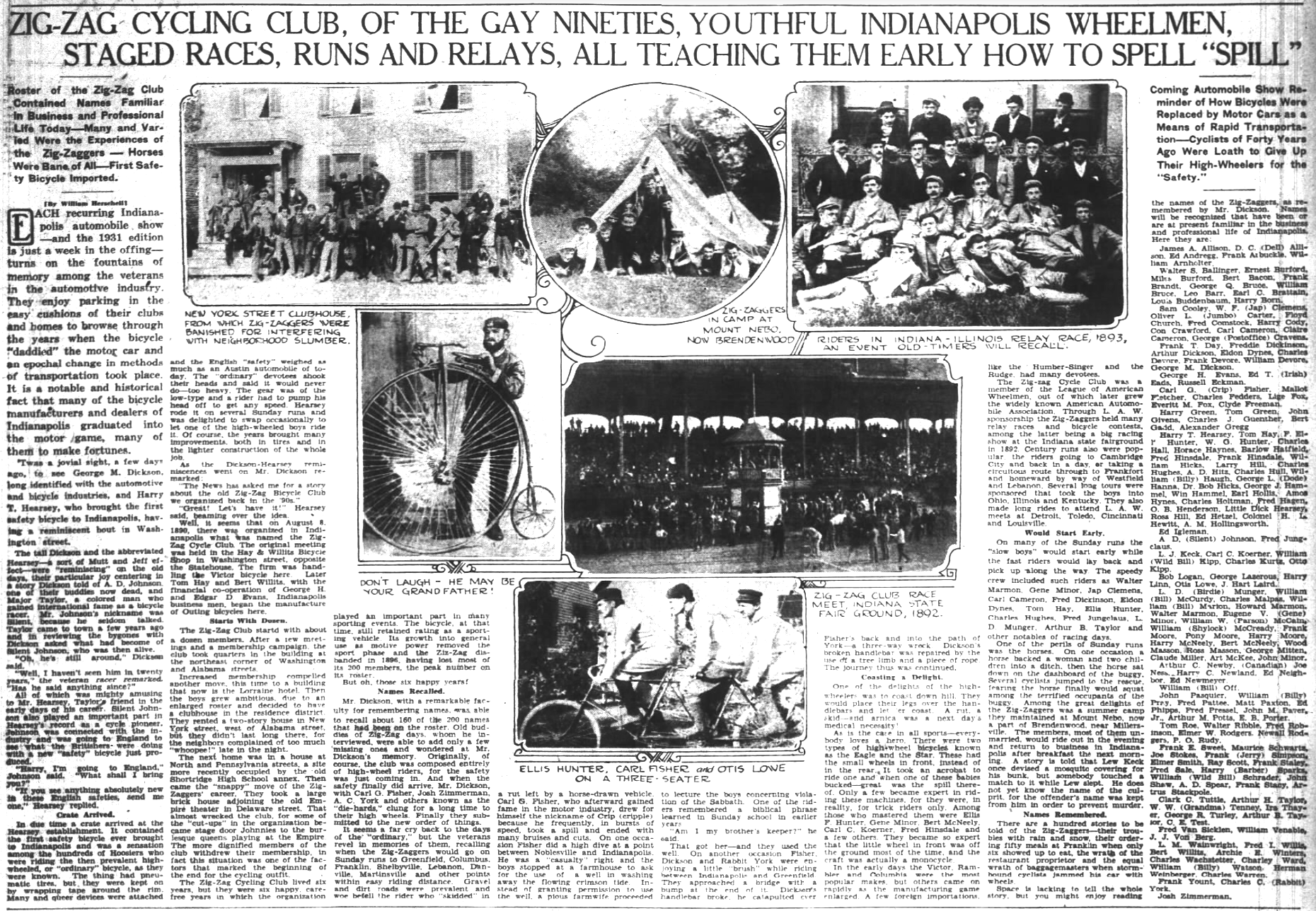founded the Zig-Zag Cycling Club, originally called the Indianapolis Cycling Club, in 1890. The club started with a dozen members, which included Newby’s future cofounders of the and .

The club was an active division of the national League of American Wheelmen (LAW), of which Indianapolis architect and cyclist was president. The Zig-Zag Cycling Club’s first meeting took place at the Hay and Willits Bicycle Shop, opposite the Indiana .
Membership in the club grew rapidly, prompting the club to move its meetings to the Lorraine Building, at the southwest corner of Washington Street and Tennessee Street (Capitol Avenue). By the end of 1891, increased club membership necessitated several more moves until the club finally settled in a brick house connected to the Empire Theatre on Delaware Street.
LAW subsidized numerous cycling events for the Zig-Zaggers. Century rides or “Century Runs” of 100 miles, in which riders trekked to Bloomington or Cambridge City in a day, were popular among cyclists. Other Century Runs involved circuits from Indianapolis to Franklin, Lebanon, Westfield, and back to Indianapolis.
More skilled riders ventured out of state to Ohio, Kentucky, and Illinois. Slower riders started earlier than the faster riders, who swiftly caught up with the pack. These out-of-state rides took place on Sunday afternoons, when the roads were full of horses and carriages transporting people to and from church. Newspaper reports of fast-moving packs of cyclists causing carriage accidents created an atmosphere of tension between all who shared the roads.
To prevent these incidents, the Zig-Zag Cycling Club arranged for racing events on a closed circuit. As early as the club’s founding, they organized races at the . These races drew up to 1,000 participants from neighboring states. Typically, a Lantern Parade preceded the races followed by an evening reception at the Club’s meeting house at the end of the day’s events. The races generated so much interest in “wheeling” that the city of Indianapolis ensured ample round-trip train service from to the fairgrounds.
At its peak, the Zig-Zag Cycling Club had a membership of 200 cyclists. Like most cycling clubs in the U.S., the Zig-Zag Cycling Club did not accept women or African Americans as members. Indianapolis’ Black cyclists formed their own club, the See Saw Cycling Club to address their segregation from the mainstream organization.
The Zig-Zag Cycling Club disbanded in 1896. One reason was members’ reputation for mayhem. They had trouble maintaining a permanent clubhouse after their banishment from their meeting place on New York Street for disrupting the neighbors. A similar instance of unruliness occurred at the clubhouse next to the Empire Theatre.
Another reason the club dissolved came from shifting interests. Newby, Fisher, and Allison all became involved in the creation of the Indianapolis Motor Speedway in 1909. Still, during the heyday of cycling, the Zig-Zag Cycling Club offered its members camaraderie and opportunities to cycle recreationally and competitively.

Help improve this entry
Contribute information, offer corrections, suggest images.
You can also recommend new entries related to this topic.

